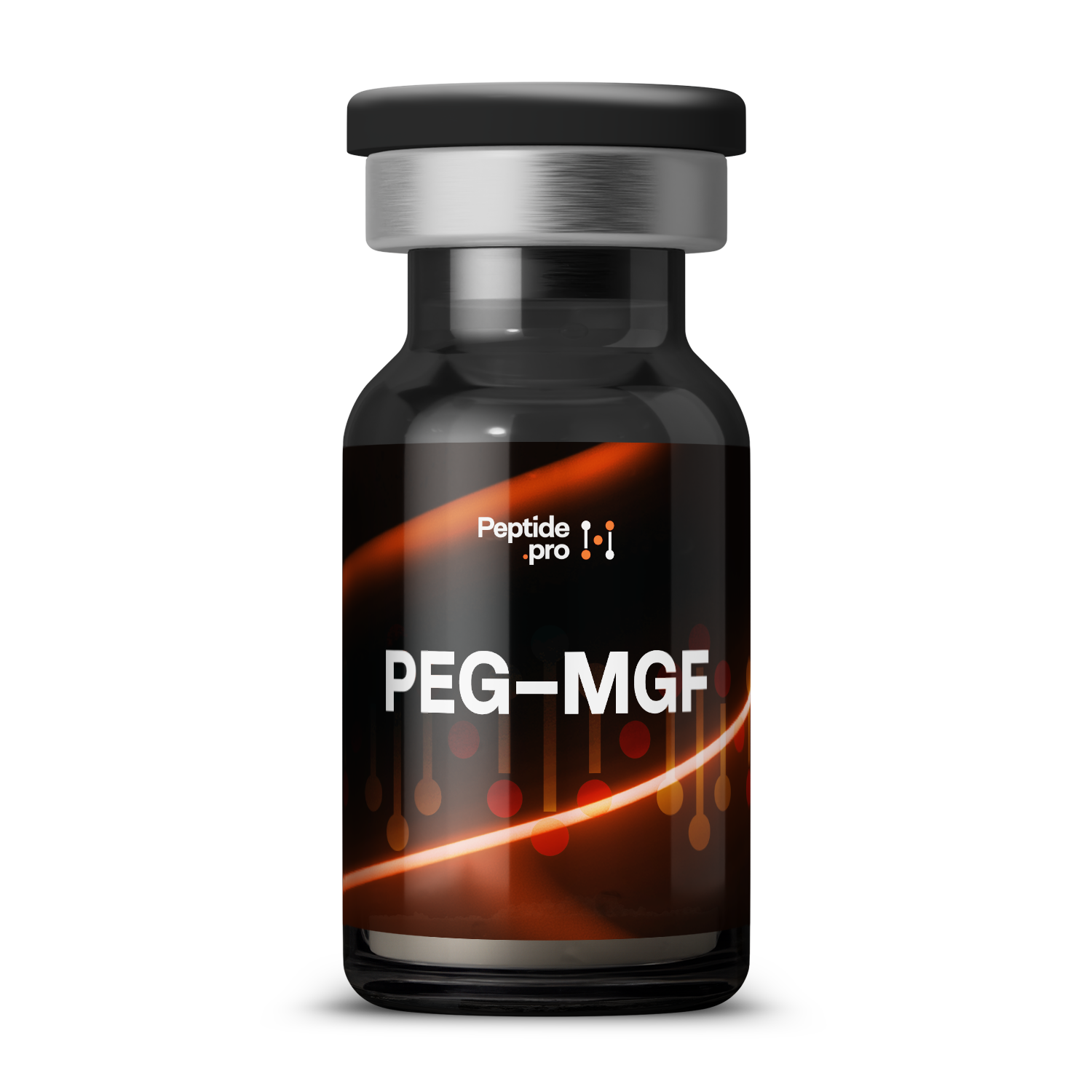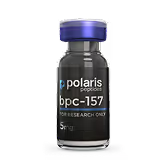PEG-MGF
PEG-MGF is a modified form of Mechano Growth Factor (MGF) with a polyethylene-glycol chain attached to extend its activity in the body. It targets muscle stem cells (satellite cells) and keeps them active longer, promoting sustained muscle repair and growth after injury or intense exercise. In research, PEG-MGF shows improved cell migration and tissue regeneration compared to unmodified MGF, making it a focus for studies on muscle recovery and atrophy prevention.
Compound Overview
About the product
The core peptide includes the IGF-1 E-domain extension of MGF (an additional C-terminal segment) comprising roughly 70 amino acids. A PEG moiety is covalently linked—typically at the N-terminus—to increase molecular size and resist enzymatic degradation. All amino acids are natural L-forms, and the PEG is a neutral polymer. Research-grade material is purified by HPLC to ≥95 % purity and verified by mass spectrometry.
PEG-MGF binds the IGF-1 receptor on muscle satellite cells, activating the PI3K/Akt pathway to promote cell proliferation and muscle repair. The PEGylation prolongs receptor engagement by slowing renal clearance. Downstream signaling increases protein synthesis and supports regeneration of damaged muscle fibers. Effects have been demonstrated in ex vivo human muscle cultures, though in vivo human data remain limited.
PEG-MGF peptide benefits are being studied for their potential to enhance muscle recovery and adaptation following injury or intense exercise. In laboratory and ex vivo models, PEG-MGF promotes satellite-cell activation and accelerates myotube formation more sustainably than unmodified MGF. It is used in research on sarcopenia, disuse atrophy, and sports medicine. Human clinical studies are still needed to confirm efficacy.
No serious adverse events have been reported in limited preclinical or ex vivo studies. Injection-site discomfort is the most commonly noted issue in animal-model administrations. Systemic safety data in humans are lacking, and potential effects on glucose metabolism or cancer risk have not been evaluated. Research use should include monitoring of muscle biomarkers and general health parameters.
PEG-MGF is synthesized by solid-phase peptide synthesis of the MGF sequence, followed by site-specific conjugation of methoxy-PEG (5–20 kDa) at the N-terminus. After PEGylation, the product is purified by size-exclusion and reverse-phase HPLC to research-grade purity. Mass spectrometry and SDS-PAGE confirm correct mass and PEG incorporation. Manufacturing follows peptide and polymer-combination best practices.
PEG-MGF is classified for investigational research use only and is not approved by FDA, EMA, or other regulators. It cannot be prescribed or sold for human therapy. Laboratories may obtain it under research-reagent regulations, varying by jurisdiction. No over-the-counter or clinical formulations exist.
Human dosing guidelines are not established. Research protocols in animal studies often use 0.1–0.5 mg/kg subcutaneously once daily for 3–7 days post-injury. Ex vivo human muscle studies apply concentrations of 10–100 nM. All dosing in human research must adhere to institutionally approved protocols.
- Do restrict use to IRB-approved research settings with medical oversight.
- Do monitor muscle-function and IGF-1 signaling markers.
- Don’t extrapolate animal or ex vivo findings directly to clinical practice.
- Don’t combine with other growth-factor agents without scientific justification.
- Q: How does PEG-MGF differ from regular MGF?
- A: The PEG chain prolongs its circulation time, giving longer receptor activation.
- Q: Has PEG-MGF been tested in humans?
- A: No; human clinical studies have not yet been conducted.
- Q: Can it cause unwanted tissue growth?
- A: Potential risks of off-target proliferation remain unstudied and require caution.
For research use only. Not approved for medical use.


